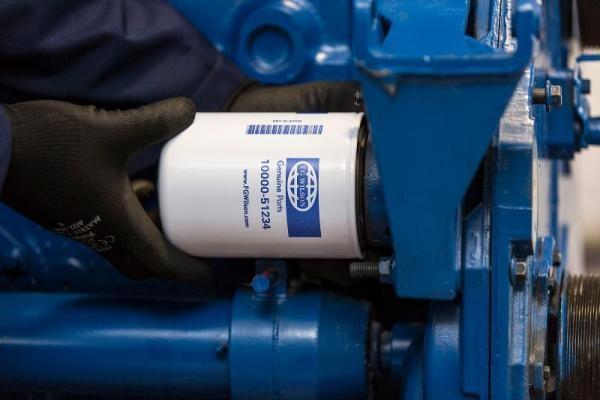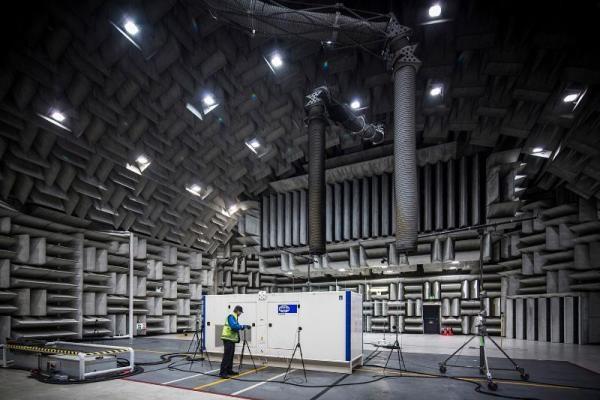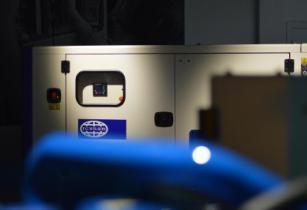FG Wilson’s advanced diesel and gas generator sets aim to provide superior power solution through their performance, flexible range of features and ease of serviceability in the field
“The market for generator sets is a crowded and unforgiving place,” said Paul Creighton, the newly-appointed managing director of FG Wilson, and with around 30 years of commercial and product background in the industry, he knows and understands the industry very well.
As a way of providing guaranteed electric power, generator sets have been around for a long time and the simple economics of securing the power supply mean that they are a strong consideration for many people.
FG Wilson has been around for more than 50 years, installing more than 625,000 generator sets since 1990 (as far back as their computer records can search). Paul can see why they are a popular choice – “When it comes to guaranteeing standby or emergency electrical power, in terms of cost, flexibility and responsiveness, for many people, the best option is a generator set.”
Diesel engines are the most common prime mover for generator sets and the reasons have always been practical: compared with other engines, they are more economical to run, typically easier to service and maintain, fuel is safer to store and transport than petrol or gas fuel and engines are durable. Because the engines operate at relatively low RPM in power generation applications, they can expect a long working life, if looked after and in countries where usage is high, examples of generator sets with 30,000 operating hours are not uncommon.
The basic technology in a generator set today remains very similar to what it has always been: FG Wilson can point to a seventy-year-old 50kVA generator set on display in one of their factories which wouldn’t look out of place on a customer site today. However, as Paul noted, “What has changed is the efficiency of the generator sets you see now. The seventy-year-old 50kVA generator set is about the same size as a 250 – 300kVA generator set today.”

That big reduction in size, in other words, the improvement in power density, has meant a corresponding reduction in fuel consumption and in emissions from generator sets, with emissions further reduced by new engine technology. FG Wilson engines are sourced from the UK-based manufacturer Perkins, designed in the UK and among the most modern and fuel-efficient engines available. All meet or surpass standards wherever the engines are being used.
Rightly, there’s growing interest in renewable sources of energy. Paul remarked, “We’re seeing this in many applications where a generator set may be running for four or five hours a day and customers are seeking to reduce operating costs by adding a renewable element. We’re working with some telecoms networks and supplying hybrid generator sets with solar panels as part of the package. Thinking ahead, in countries where generator sets may be running for several hours a day, we can see solar panels, batteries, wind turbines and generator sets all linked and capable of powering settlements or customer applications.”
“In regions where mains supply is more secure and power outages less common, energy storage is also starting to become an option for some users. These are usually domestic or other light users of electricity, who may have enough electrical energy stored to see through short outages. However, where you have a facility which requires substantial electric power, like a data centre or hospital, current renewable and energy storage technology is not sufficiently well developed to be a commercially viable option for standby power. For guaranteed continuity of power, you still need a generator set, but that might exist along with some renewable energy sources, so you could end up with a slightly smaller generator set installed or perhaps run on batteries for a very short outage.”
For FG Wilson products today, the watchwords which design engineers live by are customer operational efficiency and keeping customer operating costs low. That means long service intervals, up to 1,000 hours on some of the popular small models with fewer parts consumed and fewer maintenance calls. On the popular 6.8 – 25 kVA range there’s a choice of three sizes of the fuel tank, with the largest 2,000-litre tank capable of fuelling the 11 kVA unit for up to 185 days for four hours a day at 75 per cent load. A choice of sound attenuated enclosures means customers can fit needs to budgets.

Reliability in service is also a big priority: every new design is thoroughly validated at the UK facility including 500 hours of testing at full load power rating, covering maximum cold load step and hot load step and further testing for vibration, engine/alternator cooling, electromagnetic compatibility, noise, water ingress and rating/transient performance.
Coming from an engineering background, Paul sees this as especially important. “We’re a volume manufacturer and we take reliability extremely seriously. We know that thorough upfront design, testing and validation all lead to superior reliability throughout a product’s lifetime and that this can really save customers a substantial amount of money over time. If you add to this the wide and efficient FG Wilson dealer network with fast delivery of parts, it really does make a difference.”





















